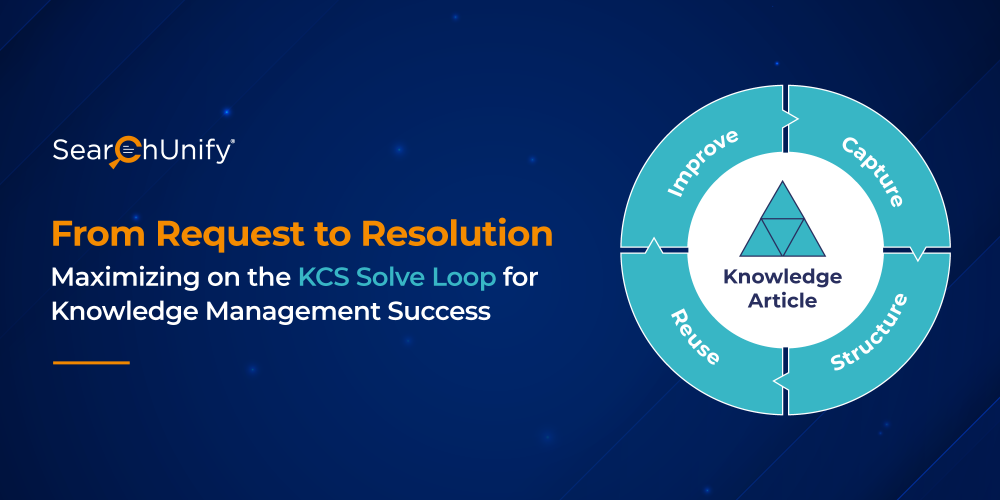
According to Interact, approx 20% of business time – the equivalent of one day per working week – is wasted by employees searching for information to do their job effectively.
In customer support, the inability to access critical information can significantly impede the resolution process, resulting in an unfavorable customer experience.
Let’s consider a hypothetical scenario. A customer contacts a support organization for an issue regarding a product they purchased. Agent X receives the case but is unable to find the product sales information in the company’s system, which leads to a major delay in addressing the issue. The customer, as a result of waiting for a prolonged period of time, leaves a negative review on social media, which gravely impacts the brand image.
The more time customers have to spend in getting their issues resolved, the more likely they intend to shoo away. This is where Time to Resolve (TTR) comes into play. It refers to the time taken to resolve a customer issue, and it’s a critical metric for measuring the effectiveness of support services. Let’s dive deeper into this.
Accelerating Time to Resolution with Knowledge-Centered Service (KCS)
Implementing KCS is a surefire way to reduce time to resolution. It is a framework for collecting, structuring, reusing, and improving knowledge continually to enhance support outcomes. With KCS, support organizations can leverage the collective knowledge of their employees and provide quick and accurate solutions to customer issues.
However, the adoption of KCS may prove to be a challenging endeavor for many organizations. Without further ado, let’s delve into the reasons why.
Walking Down The KCS Road: The Two Key Barriers to Adoption
Realizing the full potential of KCS is only possible if you’re aware of the obstacles that lie ahead. Some of the major ones are:
1. Limited Training in KB Creation
A knowledge base is the backbone of KCS since it contains collective organizational knowledge. When employees are not trained on how to create high-quality knowledge base (KB) articles, it can lead to articles that are incomplete, inaccurate, or difficult to understand. What’s worse? Your agents can suggest the wrong resolutions to customers due to subpar KB quality, resulting in customer frustration and lower satisfaction levels.
2. Agent Burnout
The KCS methodology emphasizes continuous learning, collaboration, and participation in knowledge sharing. More often than not, agents struggle to keep up with the burgeoning caseload. Due to this, documenting resolutions can feel like an additional burden for agents, who may be hesitant to add to their already overwhelming workload. Burnt-out and demotivated agents may not have the energy or motivation to engage in these activities, thus reducing participation, lowering the quality of KB articles, reducing collaboration, and increasing the risk of turnover.
Remove the Obstacles with the KCS Solve Loop
To ace customer support, your agents must have instant access to case-resolving information. If they have to hop platforms for finding the resolution, this additional time taken will inevitably infuriate the customer. The KCS solve loop helps you overcome that. Here’s how:
-
Capture: The Capture phase of the KCS methodology involves recording the language and phrases used by customers and agents to build a knowledge base.
This information can then be used by others who may have the same question in the future, making the article more discoverable and reusable. Essentially, capturing this information helps to create a more effective knowledge base.
- Structure: In the Structure phase, a consistent format is established for all articles using simple templates and procedures. This improves readability and makes it easier to identify existing articles, ultimately leading to faster resolution times and the creation of new articles based on existing knowledge.
- Reuse: The third KCS practice, Reuse, emphasizes the importance of preserving words and phrases used to search for knowledge. Doing so can improve existing articles or help create new ones. It also ensures that requests are not solved repeatedly and that the collective experience of the organization is leveraged. “Search early, search often” is an important principle to follow to ensure efficient use of time and resources in the KCS workflow.
- Improve: The fourth KCS practice is “Improve,” where every article is reviewed for accuracy and completeness, and flagged or fixed if necessary. If a knowledge worker lacks access or confidence to make the change, they can refer the article to someone who can, or if they have access, they should immediately take action to improve the article. This ensures continuous improvement and accuracy of the knowledge base.
Improve Knowledge Linkage and Creation with Cognitive Technology
By leveraging cognitive products like Knowbler within your infrastructure, you can streamline the KCS Solve Loop process and minimize the time your agents spend on documenting resolved cases. What’s more, Knowbler can automatically generate relevant articles while your agents handle customer inquiries. All you have to do is review the articles and hit publish.
Furthermore, AI-powered products like Agent Helper and Knowbler can track and measure the efforts of your agents through detailed analytics reports. You can gain insights into the number of times articles were shared, the channels through which they were shared (e.g. email or case comments), the number of articles attached to customer cases, and how effective they were in resolving customer issues. What’s not to love?
To that end, KCS is an ongoing culture that needs to be embedded within an organization. Its solve loop ensures content generation, reuse, and improvement, but it’s not enough without the evolve loop. This loop evaluates content, integrates processes and technologies, and aligns everyone with organizational goals, where leadership and communication are essential components. Curious to learn more about this topic? Check out the second part of this exciting blog post.


















